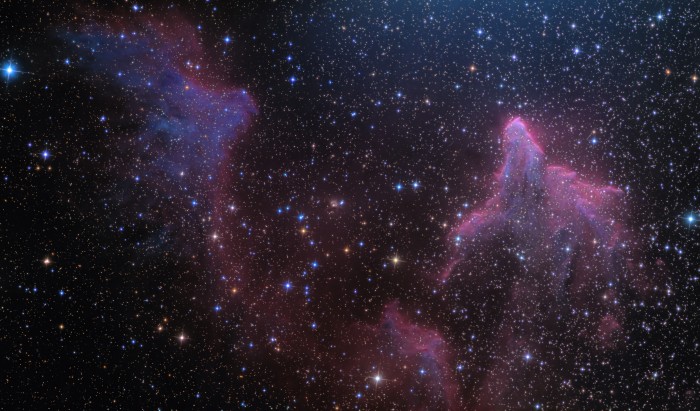A Taste of TimeScapes
These awe-inspiring time-lapse videos are previews of Tom Lowe’s upcoming astronomy film, TimeScapes:
Gorgeous. Just gorgeous.
It’s footage like this that makes me wish I didn’t live in the city.
via Gizmodo
The Long Lost 14th Episode of Cosmos Has Been Found
This is amazing. It appears that the long lost fourteenth episode of Carl Sagan’s Cosmos has been recovered! In this episode, Carl Sagan takes us on a trip to the Meat Planet, a planet formed 15 billion years ago, when an early god exploded or something at 40,000 mph. An accretion disk of heavy meat, cosmic bone meal and blood-rich gravy slowly formed as the hot, spinning flesh particles were pulled together by gravity and “dark meat”, the invisible force which scientists believe holds meat together. The disk spun, collapsed and eventually cooled, forming into the spherical spectacle of nature that makes our stomachs rumble in wonder to this day:
So silly, and so wrong, yet so hilarious.
“Would it be enriched by adding spices? No one can say.”
Learn more about the Meat Planet
via MetaFilter
This Is How Curiosity Will Land on Mars
NASA’s Mars Science Laboratory, the Curiosity rover, is now headed toward the red planet. This is how it’s going to land in August 2012:
Impressive!
via reddit
Brinicle: An Icy Finger of Death in Antarctica
https://www.youtube.com/watch?v=LMhBuSBemRk
This is not a scary movie. This is just nature!
With timelapse cameras, specialists recorded salt water being excluded from the sea ice and sinking.
The temperature of this sinking brine, which was well below 0C, caused the water to freeze in an icy sheath around it.
Where the so-called “brinicle” met the sea bed, a web of ice formed that froze everything it touched, including sea urchins and starfish.
The unusual phenomenon was filmed for the first time by cameramen Hugh Miller and Doug Anderson for the BBC One series Frozen Planet.
more/via BBC
IC 59 and IC 63 in Cassiopeia
From NASA APOD:These bright rims and flowing shapes suggest to some melting ice cream on a cosmic scale. Looking toward the constellation Cassiopeia, the colorful (zoomable) skyscape features the swept back, comet-shaped clouds IC 59 (left) and IC 63. About 600 light-years distant, the clouds aren’t actually melting, but they are slowly dissipating under the influence of ionizing ultraviolet radiation from hot,luminous star gamma Cas. Gamma Cas is physically located only 3 to 4 light-years from the nebulae, just off the upper right edge of the frame. In fact, slightly closer to gamma Cas, IC 63 is dominated by red H-alpha light emitted as the ionized hydrogen atoms recombine with electrons. Farther from the star, IC 59 shows proportionally less H-alpha emission but more of the characteristic blue tint of dust reflected star light. The field of view spans about 1 degree or 10 light-years at the estimated distance of gamma Cas and friends.
